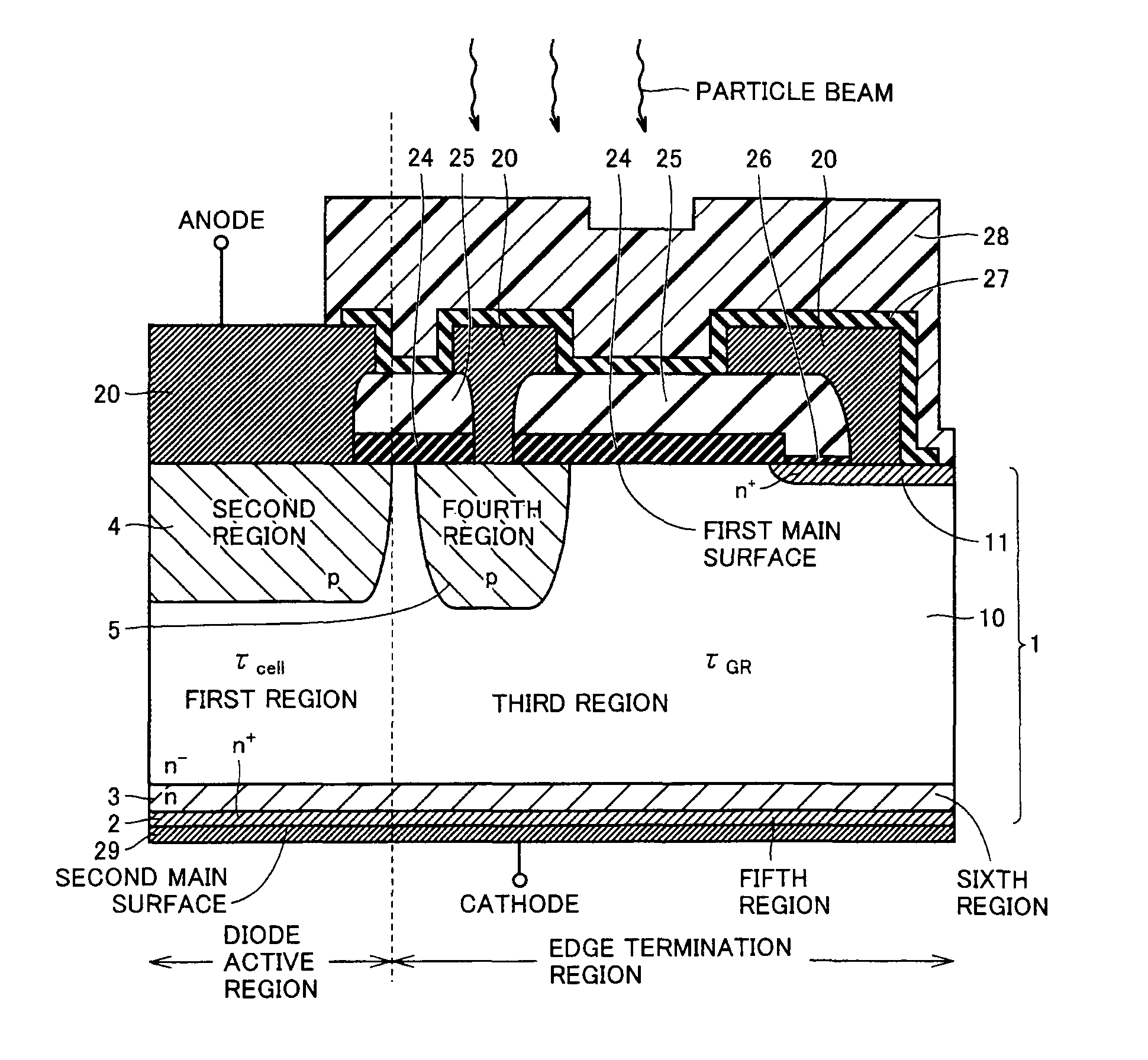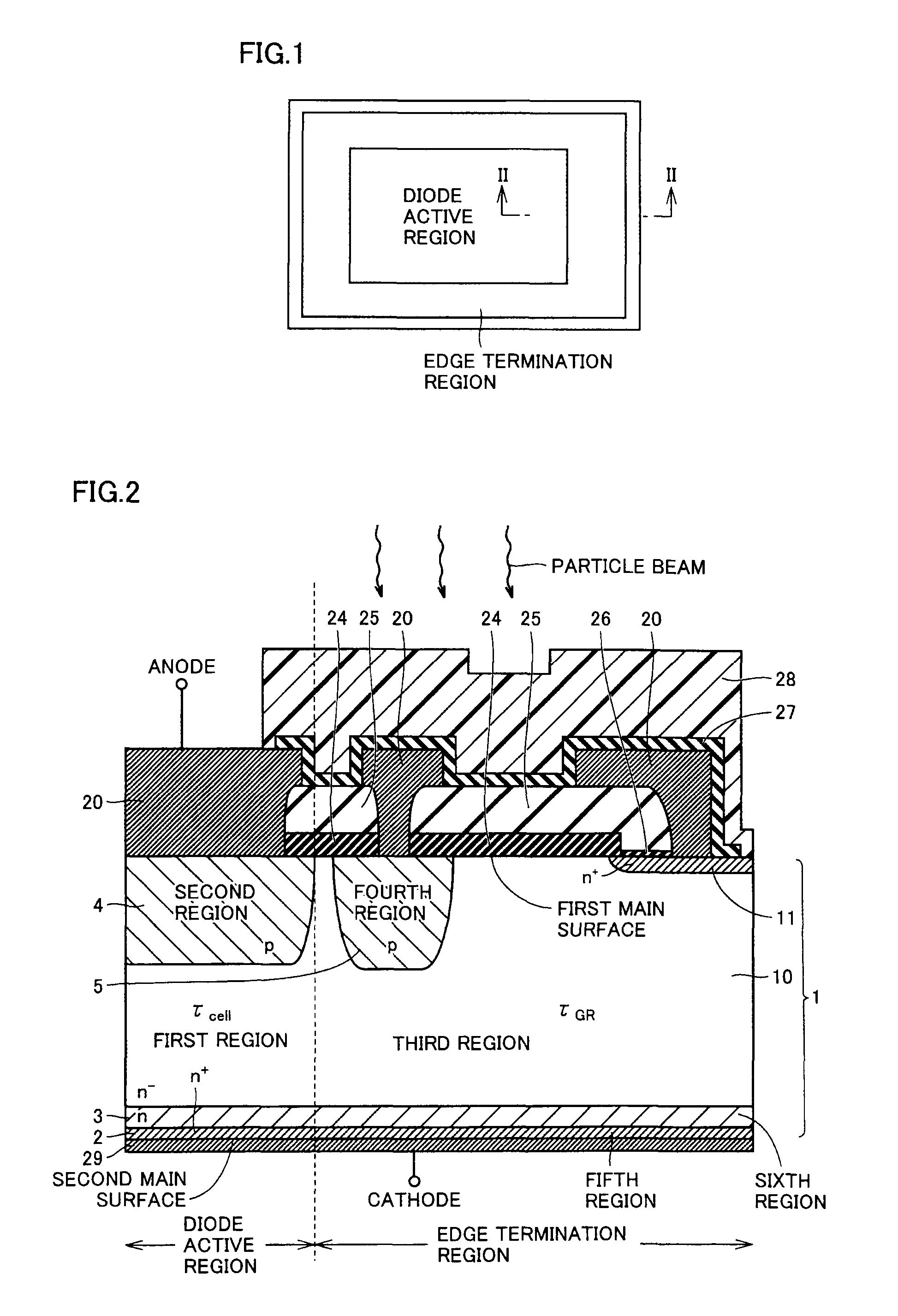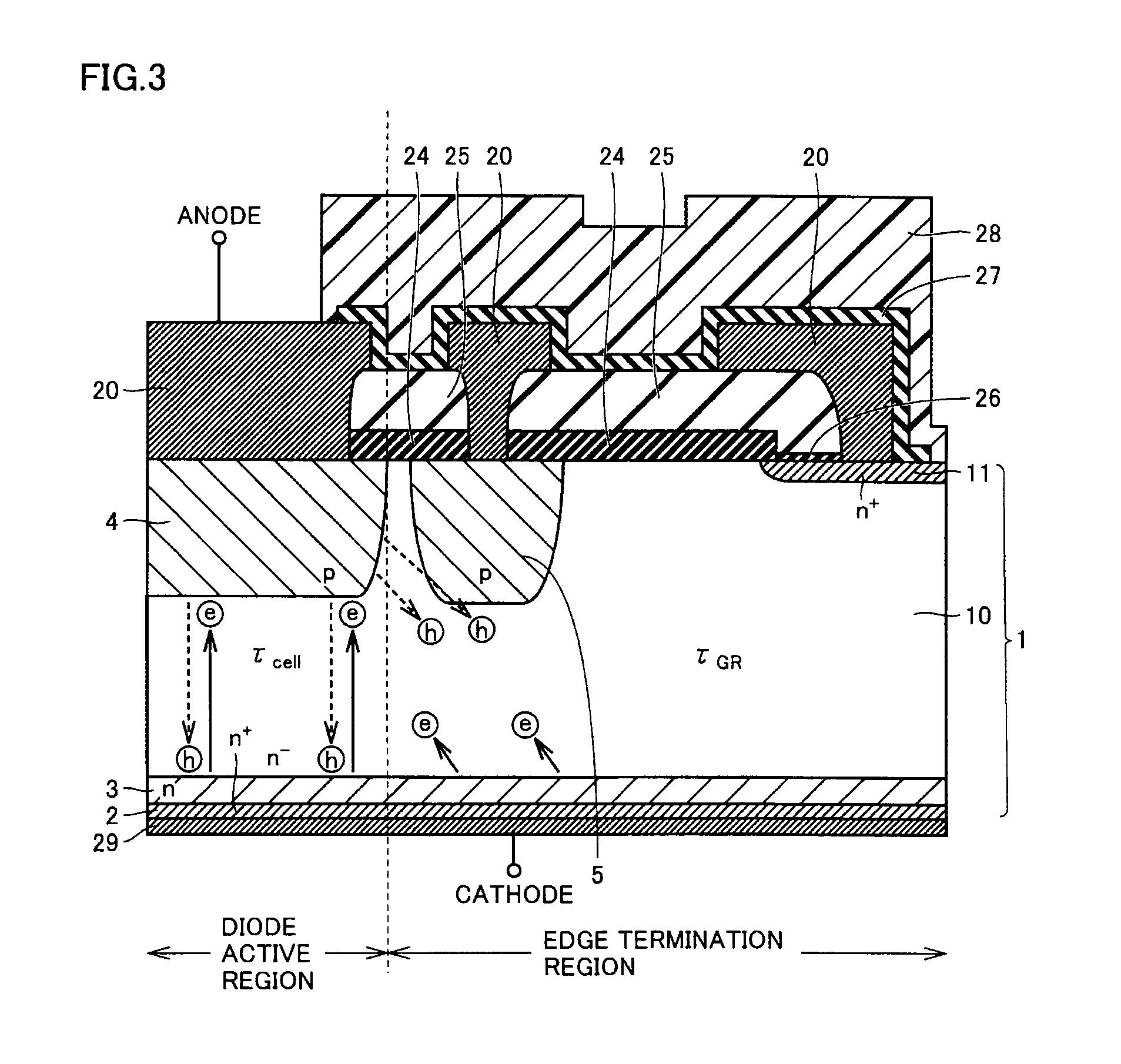Semiconductor device
a technology of semiconductor devices and semiconductors, applied in semiconductor devices, semiconductor/solid-state device details, electrical apparatus, etc., can solve the problems of decreasing the amount of current and increasing the breakdown voltage in this region, and achieve the effect of increasing the breakdown voltage in the boundary region, suppressing the thermal destruction resulting from increased temperature in this boundary region, and increasing the current density
- Summary
- Abstract
- Description
- Claims
- Application Information
AI Technical Summary
Benefits of technology
Problems solved by technology
Method used
Image
Examples
first embodiment
[0064]Referring to FIG. 1, the semiconductor device (diode) according to the present embodiment includes a diode active region and an edge termination region. The edge termination region surrounds the diode active region as seen in plan view.
[0065]FIG. 2 is a cross-sectional view taken along a line II-II in FIG. 1. Referring to FIG. 2, the semiconductor device according to Example 1 in the present embodiment includes a semiconductor substrate 1. Semiconductor substrate 1 is, for example, made of a single crystal of silicon, has the first main surface and the second main surface facing each other, and has the diode active region and the edge termination region as described above.
[0066]In the diode active region, a region (first region) of an n-type (first conductivity type) and a region (second region) of a p-type (second conductivity type) are joined to form a pn junction diode. Specifically, it includes an n− drift layer 10 (drift region), an n+ layer 2 (fifth region) and an n-type...
second embodiment
[0148]The semiconductor device according to the present embodiment is different in the anode configuration from the semiconductor device according to the first embodiment. The present embodiment will be hereinafter described.
[0149]Referring to FIG. 33, a p-type diffusion layer 8, an n-type diffusion layer 17, a trench structure 22, and a p+ diffusion layer 9 are formed on the anode side of the diode active region in the semiconductor device according to Example 1 of the present embodiment.
[0150]As with p-type regions 4 and 5, n-type diffusion layer 17 is a region of an n-type formed on the first main surface side of n− drift layer 10. P-type diffusion layer 8 is a region of a p-type formed on the first main surface side of n-type diffusion layer 17. P-type diffusion layer 8 and n-type diffusion layer 17 are formed also on the underside of n+ region 11 in the edge termination region. Trench structure 22 has a trench extending from the first main surface through p-type diffusion layer...
third embodiment
[0167]The semiconductor device according to the present embodiment is different in the configuration of the edge termination from the semiconductor device according to each of the first and second embodiments. The present embodiment will be hereinafter described.
[0168]Referring to FIGS. 36 to 41, the semiconductor device according to each of Examples 1 to 6 of the present embodiment is basically similar in configuration to the semiconductor device according to each Example of the first and second embodiments in FIGS. 15, 2, 7, 33, 34, and 35, respectively. It is to be noted that, on the anode side in the edge termination region in the semiconductor device according to each of Examples 1 to 6 of the present embodiment, a plurality of p-type regions 5 each as an edge termination are formed such that p-type regions 5 are arranged spaced apart from each other with respect to the first main surface of semiconductor substrate 1. The region having a plurality of edge terminations (guard ri...
PUM
 Login to View More
Login to View More Abstract
Description
Claims
Application Information
 Login to View More
Login to View More - R&D
- Intellectual Property
- Life Sciences
- Materials
- Tech Scout
- Unparalleled Data Quality
- Higher Quality Content
- 60% Fewer Hallucinations
Browse by: Latest US Patents, China's latest patents, Technical Efficacy Thesaurus, Application Domain, Technology Topic, Popular Technical Reports.
© 2025 PatSnap. All rights reserved.Legal|Privacy policy|Modern Slavery Act Transparency Statement|Sitemap|About US| Contact US: help@patsnap.com



